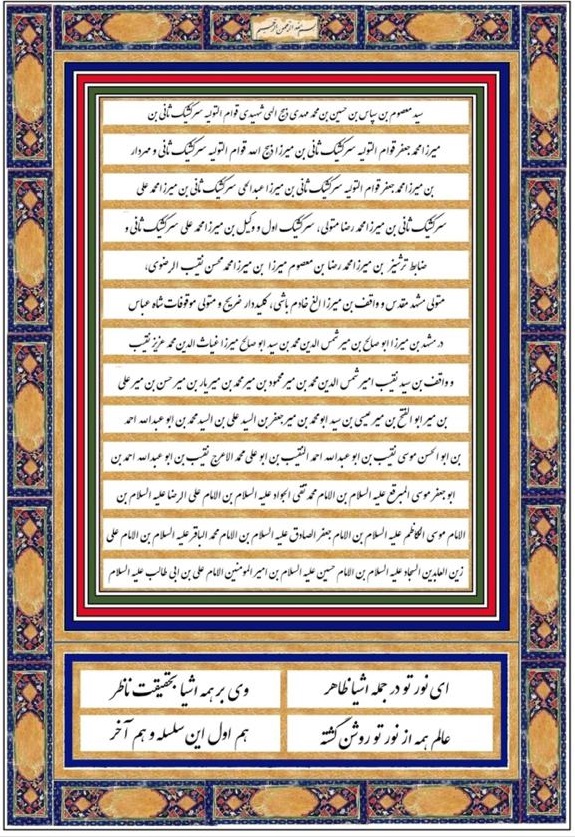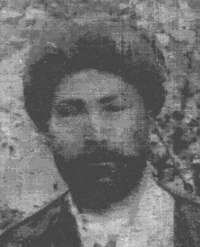
Mirza Muhammad Jafar al Razavi (Ghavam al Toulieh/Sarkeshik) b. Mirza Zabihollah (Ghavam al Toulieh/Sarkeshik/Mohrdar) b. Mirza Muhammad Jafar (Sarkeshik) b. Mirza Abd al Hay (Sarkeshik) b. Mirza Muhammad Ali (Sarkeshik) b. Mirza Muhammad Reza (Mutevalli/Sarkeshik/Vakil) b. Mirza Muhammad Ali b. Mirza Muhammad Reza b. Muhammad Masoum Mirza (Sadr al Mamalik) b. Mirza Muhammad Muhsin (Naqib/Mutevalli/Vaqef) b. Mirza Ulugh (Khadem/Keliddar Zarih/Mutevalli) b. Mirza Abu Saleh b. Mir Shams al Din Muhammad b. Seyyed Abu Saleh Mirza Ghiyath al Din Muhammad Aziz (Naqib/Vaqef) b. Seyyed Amir Shams al Din Muhammad (Naqib) b. Mir Mahmud b. Mir Muhammad b. Mir Yar b. Mir Hassan b. Mir Ali b. Mir Abu al Fath b. Mir Issa b. Seyyed Abu Muhammad b. Mir Jafar b. Al Seyyed Ali b. Al Seyyed Muhammad b. Abu Abdullah Ahmad b. Abu al Hassan Musa (Naqib) b. Abu Abdullah Ahmad (Naqib) b. Abu Ali Muhammad al Araj (Naqib) b. Abu Abdullah Ahmad b. Abu Jafar Musa al Mubarqa (AS) b. Imam Muhammad Taqi al Javad (AS) b. Imam Ali al Reza (AS)
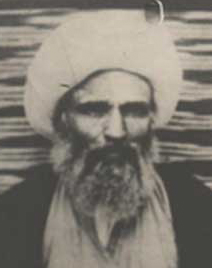
Grand Ayatollah Mullah Mohammad Kazim Khorasani (Akhund Khorasani) became the supreme Marja of Najaf, gave a fatwa in favor of the Constitutional Movement in Iran which was adopted in the state Constitution, and authored Kifayat Al Usul. In Iraq, he established three religious schools and a number of modern schools. During the constitutional revolution of Iran, he appeared as a powerful supporter of the establishment of a parliamentary form of government. Together with two other high ranking Mujtaheds he issued many manifestos and fatwas and sent telegrams to tribal chiefs, prominent national and political leaders, and heads of state in England, France, Germany, and Turkey. When Mohammad Ali Shah ascended the throne, Akhund Khorasani sent him a ten-point directive, which included instructions to protect Islam, to promote both domestic industries and modern science, to put an end to intervention by foreign powers while retaining diplomatic relations, and to establish justice and equality. He believed that in the absence of the Imam the best political institution would be a constitutional form of government. On more than one occasion he and his supporting colleagues asserted that participation in the Persian revolution was a holy war incumbent upon all Muslims, and warned that opposing it was to wage war against Islam. He decided to move to Iran to oppose the foreign invasion, but he died suddenly in his house. Anglo-Russian elements were suspected in his death.

Ayatollah Mirza Mohammad Najafi Khorasani Aghazadeh (Ayatollah Aghazadeh, son of Akhund Khorasani). In 1907, he left Najaf to take residence in Mashhad. He was a staunch supporter of the constitutional movement and with the rise to power of Reza Khan and the establishment of his despotic rule, he continued struggling against oppression and called upon the people to rise up against the first Pahlavi monarch. After the barbaric events at Gowhar Shad mosque in Mashhad, Aghazadeh was arrested and sentenced to death. However, measures taken by those at the Najaf theological school forced Reza Khan's regime to commute his sentence. Consequently, he was held in prison for a while and upon his release he was expelled from Mashhad and forced to move to Tehran. There his home was kept under constant surveillance. It is believed that he died at the hands of Ahmad Ahmadi, a Pahlavi executioner.
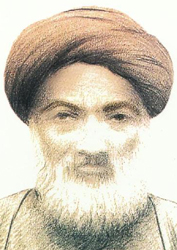
Ayatollah Mirza Habibollah Shahidi Khorasani (Mujtahed/Poet) b. Mirza Muhammad Hashem (Mujtahed) b. Mirza Hedayatollah (Mujtahed/Mutevalli) b. Ayatollah Mirza Muhammad Mehdi Esfahani Khorasani Shahid-e Rabeh (Mujtahed/Mutevalli/Imam Jomeh) b. Hedayatollah b. Taher b. Abi al Hassan b. Hadi b. Muhtashem b. Shahanshah b. Muhammad b. Maghz al Din b. Abd al Malek b. Mir Shah Burhan al Din Khalillullah (Qutb of Nimatullahi Sufi Order) b. Seyyed Nur al Din Shah Nimatullah Vali (Founder and Qutb of Nimatullahi Sufi Order/Poet) b. Mir Abdullah Vali b. Muhammad b. Mir Abdullah b. Kamal al Din Yahya b. Hashem b. Musa b. Jafar b. Saleh b. Muhammad b. Jafar b. Hassan b. Muhammad b. Jafar b. Muhammad b. Ismail b. Imam Jafar Sadeq (AS)
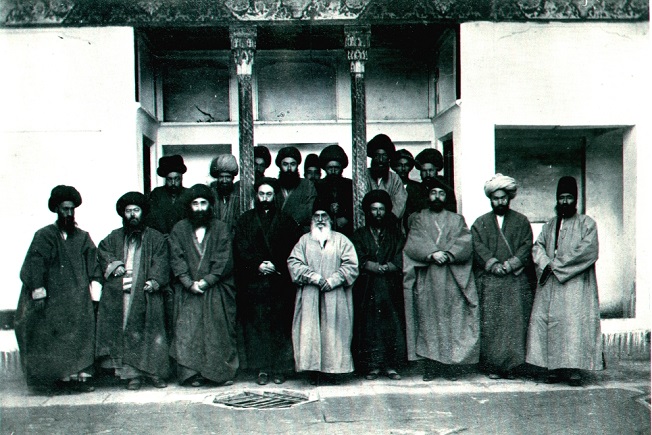
Imam Reza Shrine Officials Greeting Abdullah Qajar on His Mission to Khorasan
Front Row (Left to Right): Nezam Al Toulieh?, Emad Al Toulieh, Mirza Zabihollah
Ghavam Al Toulieh, Nayeb Al Toulieh, Saheb Divan, Mirzai Nazer,
Moen Al Toulieh, Etezad Al Toulieh, Etemad Al Toulieh
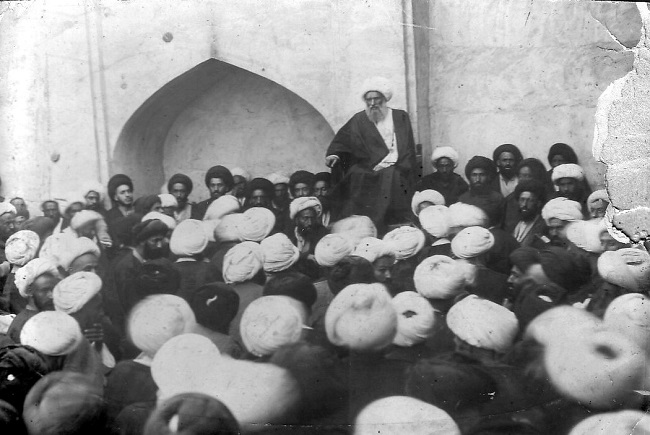
Lecture by Grand Ayatollah Mullah Mohammad Kazim Khorasani (Akhund Khorasani)
Notable Students Pictured: Grand Ayatollah Mirza Ahmad Kafai (son of Akhund Khorasani),
Grand Ayatollah Mir Mohammad Sadiq Modarres Khatoonabadi, Grand Ayatollah Seyyed Hossein
Tabatabai Boroujerdi, Grand Ayatollah Sheikh Mohammad Hassan Razi (Agha Bozorg Tehrani),
and Grand Ayatollah Mohammad Hossein Esfahani (Sheikh Kampani), among others.
